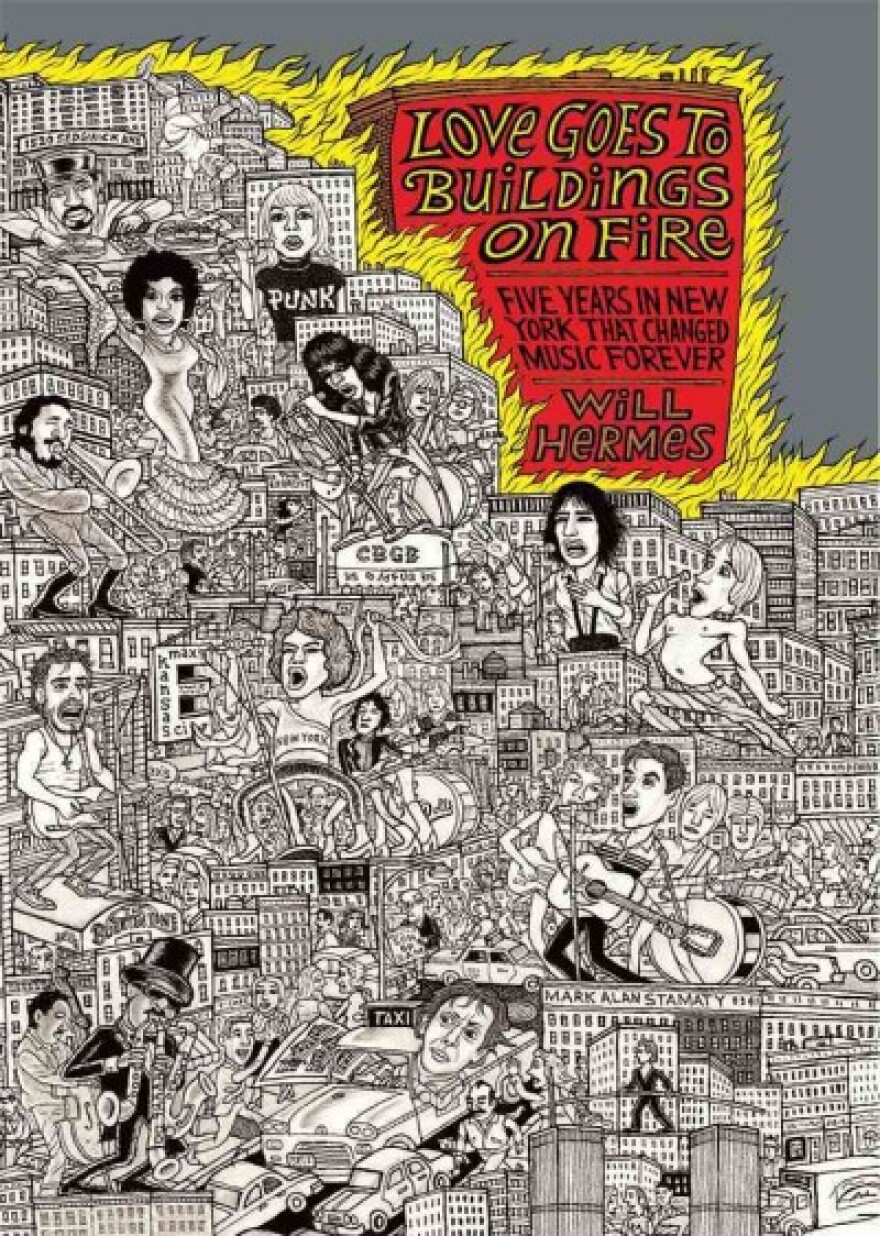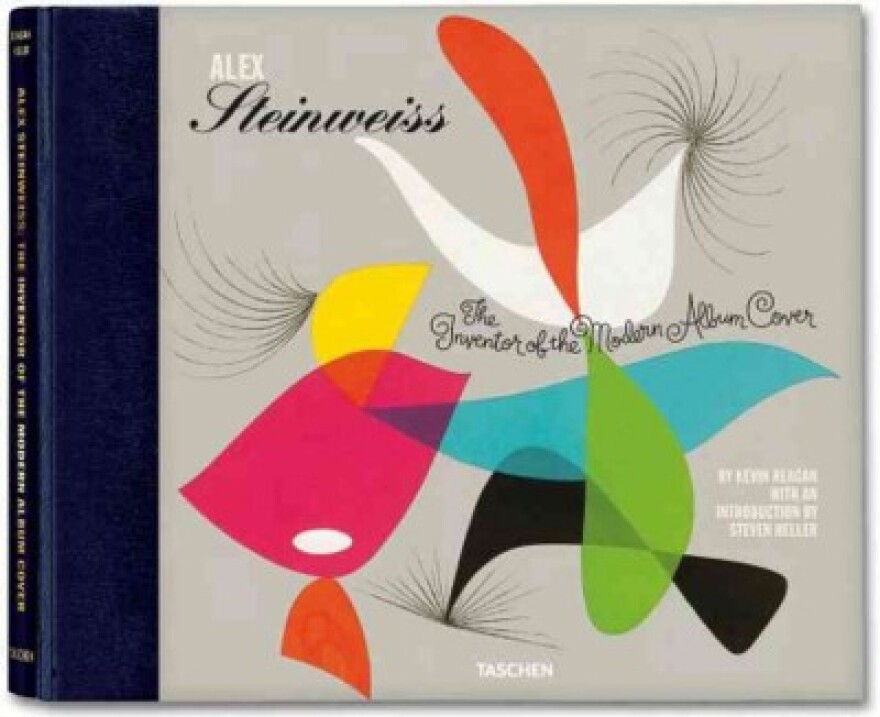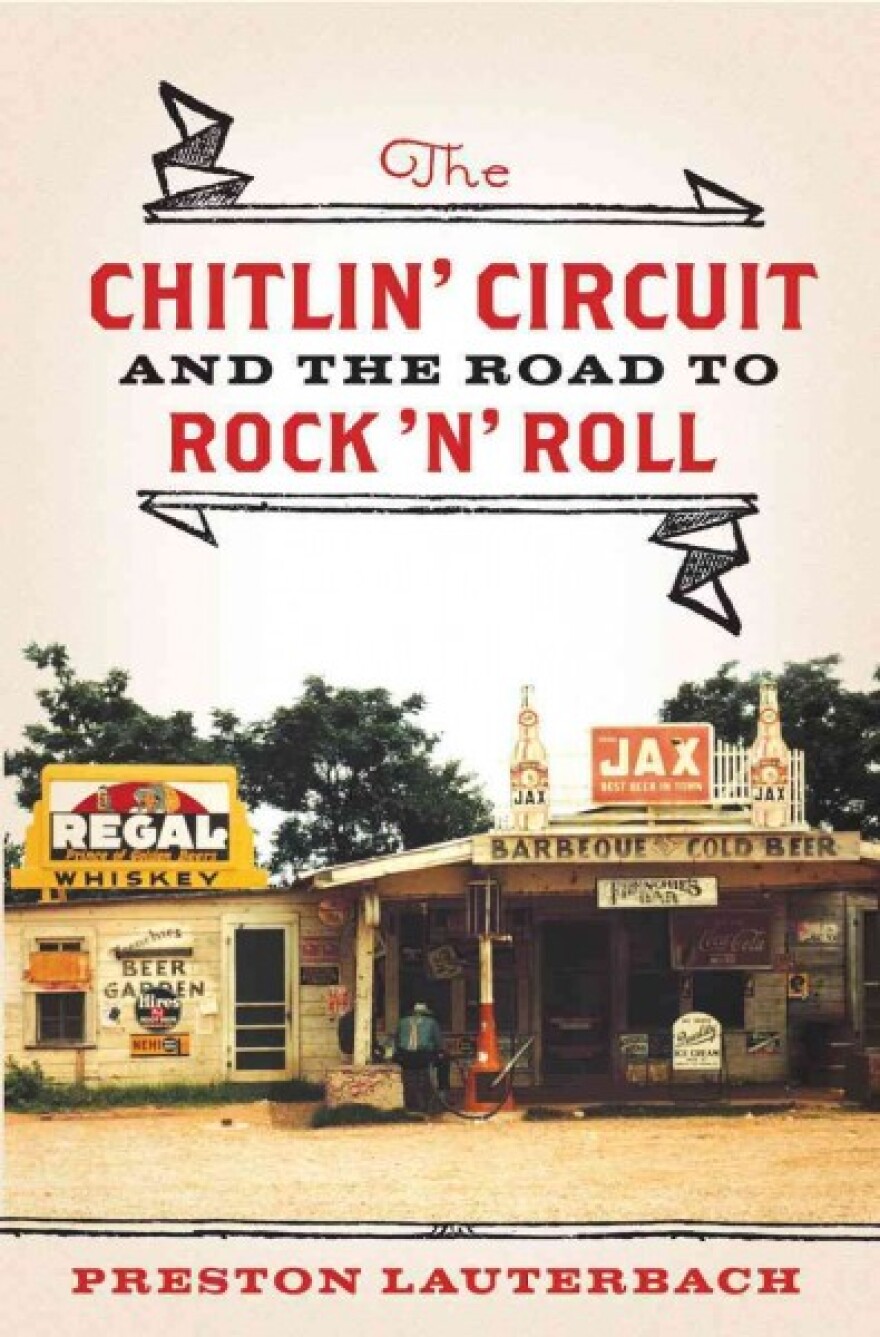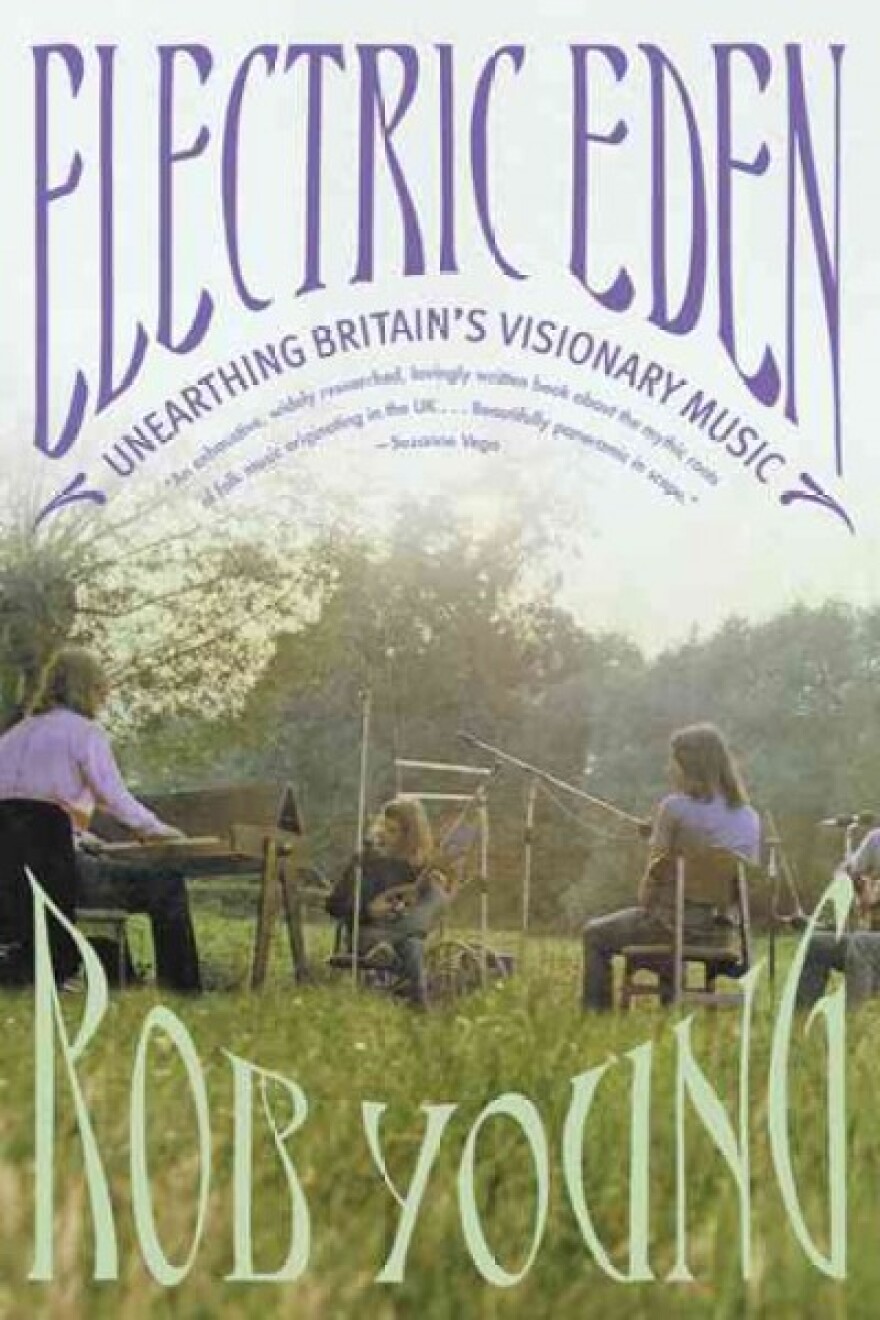How does the saying go? "Writing about music is like dancing about architecture." Overquoted, tossed off and attributed to the likes of Elvis Costello, Steve Martin and Frank Zappa, there might be some truth to those damning words, whose author remains unknown. After all, what makes music so powerful? It's the music, of course, not necessarily words about it.
But sometimes dancing about architecture is the best way to make sense of something that doesn't inherently make sense. Words can provide context and illuminate the unknown, and in 2011, our favorite books about music were mostly revealing biographies and wide-spanning analyses. Chosen by the NPR Music staff (and one of NPR's music librarians), these books are interpretations of a rich history written by the people who made the music and those who it affected, from a young, rogue music video network and a crumbling city producing radical music to the man who invented the modern album cover and a metal fanboy caught in the middle of a murder trial.
Copyright 2024 NPR. To see more, visit https://www.npr.org.
NPR Staff Picks: The Best Music Books Of 2011
Love Goes To Buildings On Fire

by Will Hermes
For a lot of us, the middle '70s was a dormant period in music sandwiched between two stellar periods: the monstrously creative middle and late 1960s and the shedding skin and rebirth of rock music in the late 1970s, particularly the punk and new wave movements. Will Hermes tears that myth apart and takes us on a journey, witnessing the birth of hip-hop, punk, minimalism, salsa and free jazz in the basements, lofts and small upstart clubs of New York City.
Hermes was a young teen living in the suburbs of New York during those days; these days he's a writer for NPR's All Things Considered and for Rolling Stone. What makes Love Goes to Buildings on Fire so compelling is that it reads like a living history, so you find Philip Glass witnessing a Talking Heads performance and vice versa, and we begin to understand how events changed the music and how music in one small geographical location changed what we hear today.
-Bob Boilen
Alex Steinweiss

by Kevin Reagan and Steven Heller
Image sells music; today, that's pretty much a given. But we can trace that idea straight back to the art designer Alex Steinweiss, who in 1940 sold Columbia Records on the idea that it could improve sales by replacing the plain brown paper wrapping on 78 rpms with something far more eye-catching. Aside from that stroke of marketing genius, and as this gorgeous, 400-plus page coffee table book amply demonstrates, Steinweiss (who died this past July at age 94) created more than 2,500 cover designs himself that were beautiful, witty and extremely smart.
-Anastasia Tsioulcas
The Chitlin' Circuit

by Preston Lauterbach
The Chitlin' Circuit: And the Road to Rock 'n' Roll is a music librarian's dream. More exhaustively researched than a dissertation on plagiarism, Preston Lauterbach's book brings a long-ignored period of musical history vividly to life. The brainchild of Denver Ferguson, the only black booking agent in the 1930s, the Chitlin' Circuit was a network of black show promoters and venues that stretched through the South from West Virginia to Texas. Ferguson sent big band acts on the road with funds gathered from various shady dealings, including racketeering, bootlegging and bribery.
Using firsthand accounts from various colorful characters, Lauterbach evokes the sights, sounds and energy of this forgotten era. This book is as much fun as I imagine a Princess Lavonne (aka Little Richard) show must have been. The Chitlin' Circuit reveals how accidents of history, musical innovation and the criminal underground combined to form modern rock 'n' roll.
-Elizabeth Allin
Retromania

by Simon Reynolds
Simon Reynolds' thesis sounds pretty alarmist at first glance: The collective appetite for nostalgia, he argues, is killing innovation and turning pop culture into a museum unto itself. But the big picture isn't what's so engaging about Retromania: It's the details that sell Reynolds' painstaking exploration of how we got to this point.
The book surveys the revival cults of popular music's past — "trad jazz" in postwar America, the ongoing British obsession with 1960s soul — and examines how technological tools have made it a cinch to go down rabbit hole after historical rabbit hole, without any impetus to create something brand new. And yet Reynolds isn't a cynic — just a concerned fan, making his case with the care and meticulousness only a true record geek can muster.
-Daoud Tyler-Ameen
Le Freak

by Nile Rodgers
Hip, hilarious and heartfelt, Nile Rodgers' Le Freak is as dapper as its writer and as catchy as the original anthem by Chic, the game-changing disco band he co-founded with Bernard Edwards. Just so, Rodgers — both bloke and bio — has alchemized what could have been a destructively dys-funk-tional family narrative into a celebration of a generation and a tale of tribal survival that's sensitive, not sentimental.
Telling his professional, political, emotional, erotic and deeply narcotic stories sparely but effectively, Rodgers is a fantastic raconteur. Graphic yet gentlemanly, Rodgers knows to leave space for the imagination, just like when he's playing guitar on "We Are Family," the Chic-produced Sister Sledge hit that is Le Freak's defining ethos.
-Vivien Goldman
Out Of The Vinyl Deeps

by Nona Willis Aronowitz
Ellen Willis, who died in 2006, was the first popular music critic for The New Yorker, a founding member of several key second-wave feminist collectives, and arguably the most useful writer on rock music who ever lived. I'm not saying "most important," or "most famous," or "funniest," or "coolest" or even "best" (though others might stump for that last one). I'm saying "most useful" because Willis' small body of work — she pretty much abandoned the subject by the 1980s — offers an ideal model for thinking seriously about popular culture.
Willis grappled with big ideas without ever getting pretentious. She made a case for her taste without coming off like a hipster or a snob. She fully grasped the link between dancing and thinking, and the one between rock's sexual forthrightness and human liberation. And she admitted when she was wrong. This anthology edited by her daughter Nona Willis Aronowitz collects her crucial work on icons like Bob Dylan and David Bowie, Janis Joplin and Creedence Clearwater Revival, and many other reviews and think pieces — all bursting with vitality and calling out for your response.
-Ann Powers
Def Jam Recordings

by Bill Adler, Dan Charnas and Lyor Cohen
"Work is the prayer," writes Russell Simmons in a preface to the book documenting 25 years of his record label, Def Jam. Lyor Cohen, who began with Def Jam by managing Run DMC and is now the CEO of Warner Music Group, says he never thought he'd see the day — a coffee table book was never the goal. The first purpose of Def Jam Recordings was to put early 1980s New York City street culture on wax; the purpose of Def Jam Recordings: The First 25 Years of the Last Great Record Label is to put the community of and around Def Jam (the execs, the publicists, managers, musicians, fans, promoters, photographers) in print.
As hip-hop approaches middle age, the urge to tell the culture's story in its own words, on paper, has been irresistible. Everybody knows Jay-Z wrote an autobiography, but this year so did Prodigy of Mobb Deep, Ice-T and Common. Def Jam went the oral history route, supplemented by photos, design, memorabilia, poster art and album covers that make the lore come alive. You will lose all track of time. The company has bet that the work that's gone into making its portion of hip-hop culture — most of which is what Simmons calls "disruptive" music — was fun enough, excellent enough, paradigm-shifting enough, that we'd take 6 1/2 pounds of office gossip and party snapshots with us every time we move.
-Frannie Kelley
Electric Eden

by Rob Young
The Wire magazine's editor at large goes widescreen on England's folk tradition, from the era of wax cylinders to today's hauntological library music. As you fall under Rob Young's spell, you realize that the idea of "folk" music in the United Kingdom is entirely different from what the music industry has trained us to expect. It's less about acoustic guitars and more about ancient ruins, or to put it more accurately, ancient remnants. The musicians and bands documented in Electric Eden — which include The Incredible String Band, Fairport Convention and Comus — make up the tail end of what you could call an Albion continuum, one that dates back further than history can fathom.
-Otis Hart
Clark

by Clark Terry and Gwen Terry
In his moving autobiography, Clark Terry tells the story of making his very first trumpet out of scrap metal, which led to school bands, then regional orchestras and eventually gigs with Count Basie and Duke Ellington. Terry also tells a fascinating story about how he broke ground when he joined the NBC Orchestra in 1960, becoming the first black member of that band. His contribution to American music would have been cemented with all of the above, but then he discovered jazz education. Clark is a worthy addition to the canon of race relations in this country and an even better account of a gifted, widely loved man who made this country a better place by simply falling in love with jazz.
-Felix Contreras
Metalion

by Jon Kristiansen and Tara G. Warrior
Jon Kristiansen is a metal scholar with a fanboy's heart. In 20 printed issues over 25 years, Slayer Mag covered the black and death metal scenes with the zeal of teenager repeatedly discovering Black Sabbath for the first time. But Kristiansen's foremost heroes (and friends) were the members of Bathory, Celtic Frost, Morbid and, crucially, the Norwegian ne'er-do-wells in Mayhem, Burzum, Darkthrone and Emperor.
In 744 pages, Metalion: The Slayer Mag Diaries collects the bulk of these interviews among Kristiansen's stunning portraits (and humorous "Arne Babb" cartoons), the exhaustive text of which practically forms the unholy black and death metal bible. But what truly sets Metalion apart are Kristiansen's stirring reflections on the controversy and collapse of the mid-'90s Norwegian black metal scene, engulfed in murder and arson, and what it meant to keep that tainted music alive for a world then reliant on postage stamps for tape trades and mail order catalogs.
-Lars Gotrich
I Want My MTV

by Craig Marks and Rob Tannenbaum
Film critic Kenneth Turan accused MTV of creating "a generation of gratification-hungry sensation junkies with atrophied attention spans." So you might think that at almost 600 pages, I Want My MTV would prove a daunting read for many of the network's fans. The authors, however, smartly structured this oral history as hundreds of short anecdotes, mirroring MTV's famous jump-cut aesthetic. Interviews with executives, VJs and musicians who achieved varying degrees of success (Limahl!), reveal a wealth of behind-the-scenes dish.
From the hilarious (for years Run DMC only knew "Walk this Way" as "Toys in the Attic," Track 4), to the infuriating (the Rashomon-esque accounts of how "Billie Jean" finally broke the channel's race barrier) to the poignant (Michael Jackson didn't taste pizza until he was 25!), these stories are strangely compelling. Have YouTube at the ready when you reach Chapter 21, which chronicles the "world's worst video." Whether you agree or not, you will not be disappointed.
-Elizabeth Allin
Everybody Loves Our Town

by Mark Yarm
Instant rock cred: I grew up in Seattle. Annihilation of cred: I left in the mid-1980s, at 20, to become a "poet" in San Francisco. (Embarrassing, right?) So Mark Yarm's account of how my hometown became the center of the last great hard rock movement is one I lived only a little bit. Still, I know the Pacific Northwest well enough to be mightily impressed with the truth Yarm uncovered. This exhaustive oral history features unknowns, cult figures, supporting players and stars; each gets the time he or she deserves as Yarm pieces together the arc of a scene that built itself from scratch, blossomed beyond most people's dreams, and then crashed. Yes, there are plenty of Kurt Cobain stories. But there's much more, too — indelible characters, weird scenes, creative chaos, laughs and tragedy and lots of cheap beer.
-Ann Powers



